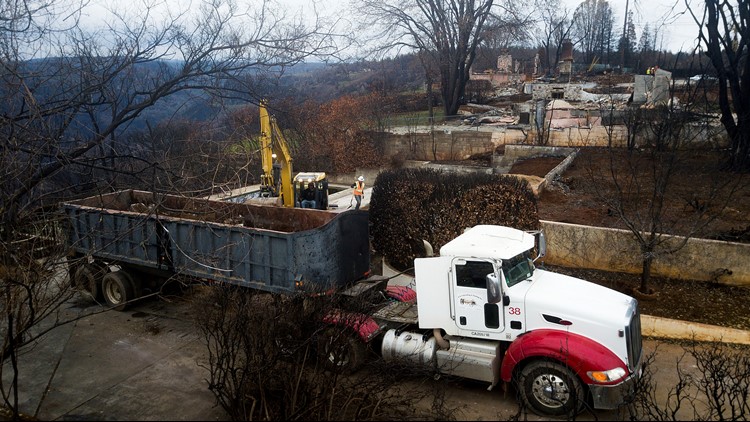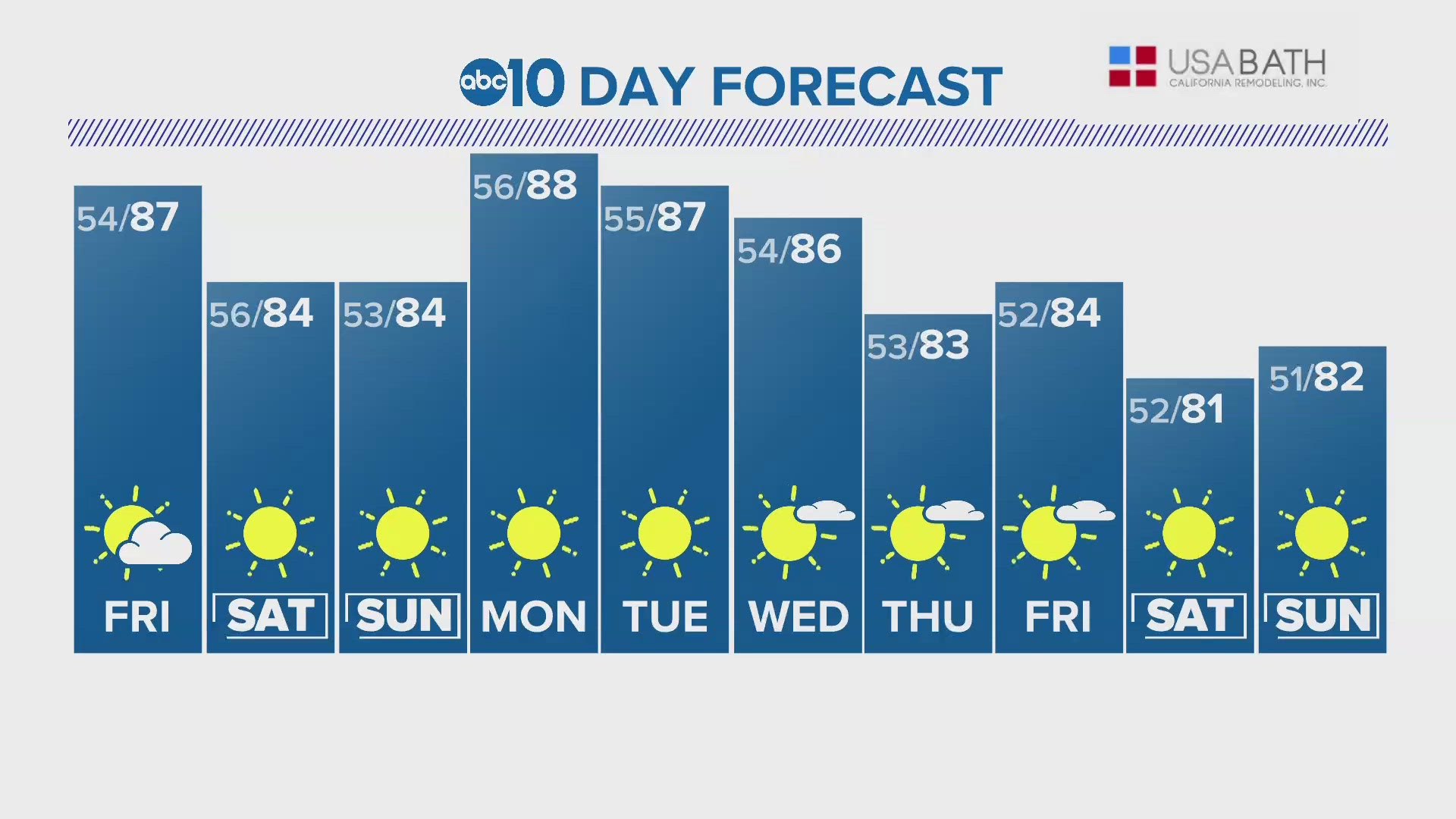Nearly five months after the Camp Fire swept through the towns of Paradise and Magalia, cleanup and recovery efforts continue. On Friday the California Governor's Office of Emergency Services released the latest debris removal numbers - saying that 224,948 total tons have been removed to date.
DEBRIS REMOVAL
Phase I of debris removal is complete, according to Cal OES, adding that Household Hazardous Waste has been completed on 13,271 parcels and 7,704 sites have been assessed in Phase II.
Mid-week, debris removal operations paused again due to wet weather and over-saturated soil conditions, but progress continues with 668 sites cleared and more than 220,000 tons of debris removed, to date.
108 debris removal crews will be back in the field as soon as weather and safety conditions permit, Cal OES said. The department released the debris totals below to provide a snapshot of cleanup.
To minimize potential impacts to the community and keep health and safety a priority during cleanup efforts, the State’s Consolidated Debris Removal Program is actively monitoring air quality in the Camp Fire burn area. Contact the Debris Removal Operations Center at (530) 399-0434 or BCAQMD for air quality information.
Total debris removal for the project: 224,948 total tons (so far)
- 2,751 tons of metals delivered/recycled
- 169,905 tons of debris, ash, & soil disposed
- 29,745 tons of concrete delivered/recycled
- 22,547 tons of contaminated soil
HOUSING
The State continues to work with Camp Fire survivors to find temporary housing. This week Cal OES announced that five temporary housing sites are in various stages of development.
"Mobile Housing Units (MHU), one to three bedroom units, which include a kitchen, bathrooms, and common areas, and Travel Trailer options are being placed at community sites and mobile home parks," the department said in an update Friday. "MHUs may be outfitted with ramps and other amenities, making them handicap assessable."
In addition to those five temporary housing sites, FEMA is supporting 234 households with mobile or temporary housing units (MHU/THU) using commercial site locations in Butte, Glenn, Mendocino, Sacramento, Shasta, Sutter, Tehama and Yuba Counties. For more information relating to the temporary sites, visit buttecountyrecovers.org.
FINANCING
"As of April 4, 2019, FEMA has provided more than $83 million in financial aid to roughly 7,900 households/renters that qualified for assistance," Cal OES said in an update Friday, adding that another $399 million in loans to businesses, private nonprofits, homeowners and renters was approved by the U.S. Small Business Administration for survivors of the Camp, Woolsey and Hill fires.
For updates on the recovery progress across the State, visit the Cal OES website.
________________________________________________________________
How would you escape the massive Camp Fire in Paradise, California?
When the Camp Fire ignited, it started a chain of events that allowed it to become the deadliest wildfire in California history. There was no plan to handle an evacuation on this scale, and it led to more than 80 deaths.



